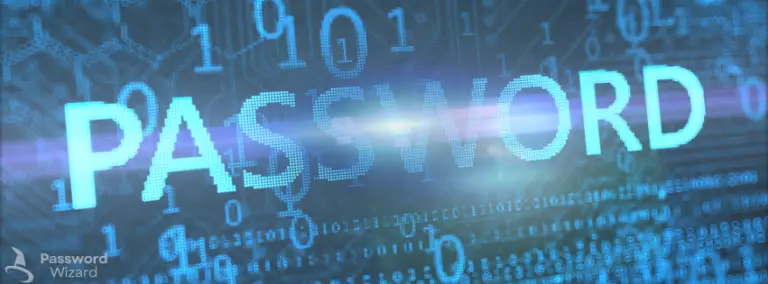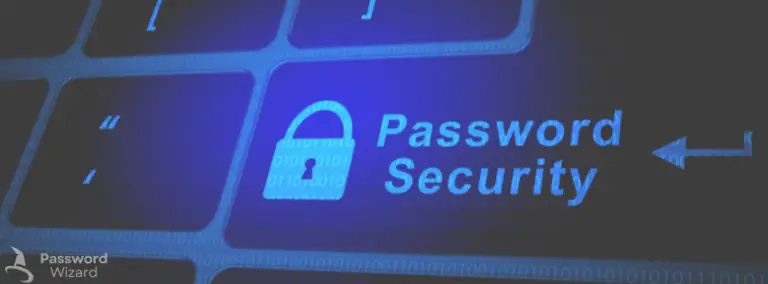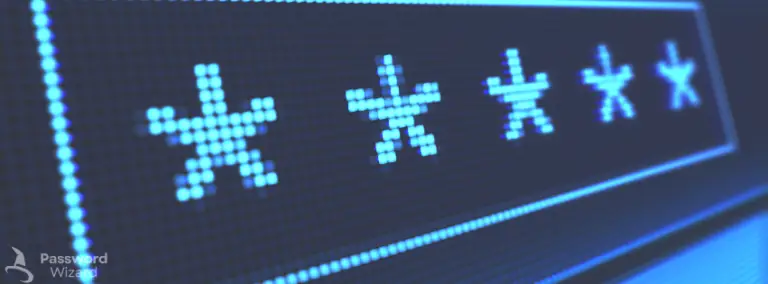In today’s digital age, where almost every aspect of our lives is connected to the internet, ensuring robust online security has never been more critical. One of the most fundamental yet frequently overlooked aspects of cybersecurity is creating strong, unique passwords for each of your accounts. This blog post will explore why reusing passwords across multiple accounts poses a significant risk, how to craft strong and secure passwords, and practical strategies for managing them effectively without sacrificing convenience.
Why Unique Passwords Are Essential
The first step toward better online security is understanding the risks associated with reusing passwords. Many people fall into the trap of using the same or similar passwords for all their accounts because it simplifies the process of remembering them. However, this seemingly convenient practice leaves you vulnerable to what’s known as a credential stuffing attack .
Credential stuffing occurs when hackers obtain login credentials from one data breach and use automated tools to test those credentials on other platforms. With high-profile breaches affecting companies like LinkedIn, Yahoo, and Adobe in recent years, it’s clear that no organization is immune to cyber threats. If an attacker gains access to your reused password through a breach, they can attempt to log into your financial accounts, social media profiles, email services, and even e-commerce sites tied to that address.
By using unique passwords for each account, you limit the potential damage caused by any single breach. Instead of granting attackers a „master key” to unlock multiple doors, unique passwords act as individual locks, making it far more challenging for hackers to compromise your entire digital presence.
Crafting Strong Unique Passwords
Creating strong unique passwords doesn’t have to be complicated, but it does require some thought and effort. A truly secure password should meet several criteria:
Length : Aim for at least 16 characters. Longer passwords are exponentially harder to crack than shorter ones. For example, a password with 8 characters might take days to brute-force, while one with 16 characters could take centuries.
Complexity : Include a mix of uppercase and lowercase letters, numbers, and special symbols (e.g., !@#$%^&*). Avoid predictable patterns such as „Password1!” or „123456.” Complexity increases entropy, making your password much more resistant to guessing or cracking attempts.
Randomness : Avoid using dictionary words, names, dates, or common phrases. Hackers often rely on dictionaries and wordlists to guess passwords. Instead, opt for random combinations of characters that don’t form recognizable patterns.
Uniqueness : Never reuse passwords across different accounts. Even slight variations (e.g., adding a number at the end) aren’t enough to deter determined attackers. Each account should have its own distinct password.
Here’s an example of a strong, unique password:G7#pX9!LqZ2@wRmT
At first glance, such a password might seem impossible to remember. But don’t worry—we’ll cover solutions for managing complex passwords later in this article.
Best Practices for Creating Secure Unique Passwords
To help you generate strong and secure passwords, here are some best practices:
1. Use Passphrases
Passphrases combine unrelated words into a longer string, making them both long and memorable while being resistant to brute-force attacks. For instance, the passphrase “CorrectHorseBatteryStaple” gained popularity after being introduced in a famous XKCD comic. You can enhance its strength by incorporating numbers and symbols:Cr0rctH0rs3B@tterySt@ple!
This approach creates a password that is easy to remember but difficult for attackers to guess or crack.
2. Avoid Personal Information
Steer clear of including easily guessable details like your name, birthdate, or address. These pieces of information are often publicly available or can be found through social engineering tactics. Using personal details in your passwords makes them significantly weaker and easier to exploit.
3. Leverage Unique Password Generators
Many password managers come equipped with built-in generators that produce highly secure, randomized strings of characters. Tools like LastPass, 1Password, Dashlane, and Bitwarden offer robust password generation features. Utilizing these tools ensures maximum entropy and reduces the likelihood of human error when crafting passwords manually.
4. Stay Away from Common Patterns
Refrain from using sequential keys (e.g., QWERTY), repetitive characters (e.g., AAAAAA), or well-known keyboard patterns. Attackers frequently exploit these shortcuts when attempting to guess passwords. Always strive for randomness and unpredictability in your password creation process.
Managing Multiple Passwords Effectively
While creating unique and complex passwords is essential, remembering dozens—or even hundreds—of them can feel overwhelming. Fortunately, there are effective ways to manage your credentials securely:
Password Managers
A password manager is a software application designed to store and organize your login information. It encrypts your passwords and stores them in a centralized vault, accessible only via a master password. Some popular options include:
Once set up, you only need to remember one strong master password, and the manager takes care of the rest. Benefits of using a password manager include:
- Automatic Generation : Automatically generates strong, unique passwords for each account.
- Cross-Platform Synchronization : Allows you to access your credentials from any device, ensuring seamless usability.
- Two-Factor Authentication Support : Adds an extra layer of security to protect your password vault.
- Convenience Features : Includes auto-fill and browser integration for effortless logins.
Two-Factor Authentication (2FA)
Even with strong and unique passwords, adding an extra layer of protection is always wise. Two-factor authentication requires users to provide two forms of identification before gaining access to their accounts. Typically, this involves something you know (your password) and something you have (a code sent to your phone or generated by an authenticator app).
Enabling 2FA significantly reduces the risk of unauthorized access, even if someone manages to obtain your password. Most major services now offer 2FA options, so take advantage of this feature wherever possible.
Regular Updates
Just as you update your antivirus software, it’s important to periodically review and refresh your passwords. Over time, certain algorithms used to hash passwords may become outdated, making older passwords more susceptible to cracking. Changing your passwords annually—or immediately after hearing about a data breach affecting one of your accounts—is a prudent habit to adopt.
Common Mistakes to Avoid
Despite knowing the importance of strong passwords, many people still fall prey to bad habits. Here are some common pitfalls to avoid:
Using Simple or Predictable Passwords : Examples include „password,” „123456,” or „qwerty.” These are among the most commonly hacked not very unique passwords year after year.
Writing Down Passwords : While jotting down passwords might seem convenient, doing so increases the risk of physical theft. If you must write them down, consider storing them in a secure location, such as a locked drawer or safe.
Sharing Passwords : Never share your passwords with others, even trusted friends or family members. Each person should maintain their own independent accounts and credentials.
Neglecting Security Questions : Weak answers to security questions can undermine even the strongest passwords. Opt for obscure responses or treat security questions as additional passwords by providing unrelated answers.
Real-World Examples of Password Breaches
To underscore the importance of unique passwords, let’s look at some real-world examples of password-related breaches:
LinkedIn Data Breach (2012) : In 2012, LinkedIn suffered a massive data breach that exposed millions of user passwords. Although LinkedIn hashed the passwords, they failed to salt them, making it easier for attackers to reverse-engineer them. Many users who reused their LinkedIn passwords on other platforms became victims of credential stuffing attacks.
Yahoo Data Breach (2013) : Yahoo experienced one of the largest data breaches in history, compromising over three billion user accounts. The breach exposed sensitive information, including usernames, email addresses, and unique passwords. Users who reused their Yahoo passwords on other platforms faced significant risks.
Adobe Data Breach (2013) : Adobe fell victim to a breach that exposed nearly 150 million user accounts. Interestingly, the breach revealed that many users relied on weak and predictable passwords, such as „123456” or „password.”
These incidents highlight the dangers of reusing passwords and underscore the need for unique passwords across all accounts.
Future Trends in Password Security
As technology evolves, so do the methods for securing online accounts. Here are a few emerging trends in password security:
1. Passwordless Authentication
More companies are exploring passwordless login methods, such as biometric verification (fingerprint or facial recognition) or magic links sent to your email or phone. These approaches eliminate the need for traditional passwords altogether.
2. AI-Powered Password Management
Advanced password managers are beginning to incorporate AI-driven features to analyze password strength, detect potential vulnerabilities, and suggest improvements to have unique passwords.
3. Quantum Computing Threats
As quantum computing advances, it poses a potential threat to current encryption methods. Researchers are already working on developing quantum-resistant algorithms to future-proof password security.
Understanding the Psychology Behind Poor Password Practices
It’s worth examining why so many people resort to poor password practices despite knowing the risks. One reason is cognitive overload—our brains struggle to remember numerous complex passwords. Another factor is convenience; people prioritize ease of use over security. Additionally, many underestimate the likelihood of becoming a hacking target, believing they’re not valuable enough to attract attention.
Addressing these psychological barriers involves education and adopting tools that simplify the process of maintaining strong, unique passwords. By leveraging password managers and automating tasks like password generation and storage, individuals can reduce mental strain while enhancing their security posture.
How Businesses Can Promote Better Password Hygiene
Organizations play a crucial role in promoting better password hygiene among employees and customers. Companies can implement policies requiring stronger password requirements, enforcing regular updates, and mandating two-factor authentication. Providing training sessions on cybersecurity best practices also helps raise awareness about the importance of unique passwords.
Moreover, businesses can integrate password management solutions into their workflows, encouraging employees to use secure tools rather than relying on memory or insecure note-taking apps. By fostering a culture of security, organizations can minimize the risk of costly data breaches and protect sensitive information.
The Role of Education in Enhancing Password Security
Education remains one of the most powerful tools in improving password security. Schools, workplaces, and community programs can teach individuals about the dangers of weak passwords and the benefits of adopting strong, unique ones. Workshops focusing on password creation techniques, password manager usage, and recognizing phishing attempts empower users to make informed decisions about their online security.
Parents and guardians should also educate children about responsible digital behavior, emphasizing the importance of safeguarding personal information through unique passwords. Starting early ensures younger generations grow up with good cybersecurity habits ingrained in their routines.
Balancing Security and Convenience
One of the biggest challenges in promoting strong, unique passwords is balancing security with convenience. While creating complex passwords enhances protection, it can lead to frustration if users find them too difficult to manage. Password managers address this issue by streamlining the process of generating, storing, and retrieving strong passwords.
Additionally, advancements in biometric authentication and single-sign-on (SSO) systems provide alternative ways to verify identity without relying solely on passwords. As technology continues to evolve, finding innovative solutions that prioritize both security and user experience will remain a priority.
Final Thoughts
In conclusion, adopting unique passwords for each of your online accounts is a crucial step in safeguarding your digital identity. By combining length, complexity, and randomness, you can create unique passwords that are virtually uncrackable. Coupled with tools like password managers and two-factor authentication, maintaining strong cybersecurity hygiene becomes manageable and practical.
Remember, your online security is only as strong as your weakest password. Take the time to evaluate your current practices, implement improvements where necessary, and stay vigilant against emerging threats. After all, in today’s interconnected world, protecting your data isn’t just smart—it’s essential.
By following the advice outlined in this article, you can significantly enhance your online security and reduce the risk of falling victim to cyberattacks. Start implementing these strategies today and enjoy peace of mind knowing your digital presence is well-protected.
Additional Tips for Long-Term Security
Stay Updated on Cybersecurity News : Keep abreast of the latest developments in cybersecurity to understand new threats and mitigation strategies.
Use Encryption Where Possible : Encrypt sensitive files and communications to add an extra layer of protection.
Be Cautious with Public Wi-Fi : Avoid logging into important accounts on public networks unless absolutely necessary. Use a virtual private network (VPN) for added security.
By incorporating these additional tips into your routine, you can further fortify your defenses and ensure long-term safety in the digital realm.
Read more:
- Free Online Password Generator Tool – Generate Strong Passwords
- Unique Passwords: The Key to Online Security
- Avoid Predictable Information in Passwords
- Two-Factor Authentication 2FA
- Secure Storage
- Browser Safety Tips: Protect Your Passwords Online
- Encrypted Connections: Safeguarding Your Online Activities
- Regular Updates: The Key to a Secure Digital Life
- Device Security : Protect devices with firewalls, antivirus software, and physical locks
- File Integrity
- Phishing Awareness
- Developer Best Practices
- Business Security



